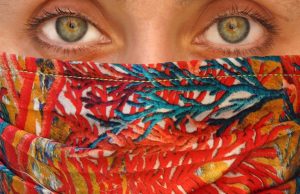No início de 2015, foi apreendida, na casa do empresário brasileiro Eike Batista, uma peça decorativa que pensou-se ser um ovo Fabergé, relíquia russa da joalheria do século XIX / início do século XX. Após uma análise mais aprofundada da peça, no entanto, verificou-se que se tratava de uma falsificação, cujo valor gira em torno de US$ 65. O que torna os ovos Fabergé tão cobiçados, a ponto de motivarem a criação de réplicas?
Muito do fascínio despertado pelos objetos de luxo deriva de sua raridade, exclusividade, além da confecção artesanal, da nobreza dos materiais neles empregados, sua tradição e, claro, da sua beleza. Os ovos Fabergé são uma perfeita combinação de tais atributos.
O joalheiro russo Peter Carl Fabergé foi responsável pela criação de uma infinidade de estonteantes joias reais. Mas foram seus ovos decorativos, confeccionados entre 1885 e 1916, em metais e pedras preciosos, os maiores responsáveis por tornar seu nome mundialmente conhecido até nossos dias.
O primeiro deles foi confeccionado a pedido do czar russo Alexandre III para sua esposa, Maria Feodorovna. Ovos decorativos eram presentes típicos na Páscoa, a data religiosa mais importante para a Igreja Ortodoxa Russa. A beleza externa da peça de ouro esmaltado, com 6cm de altura, já era impactante. Porém, seu interior reservava surpresas: uma gema de ouro continha uma galinha acomodada num ninho. Dentro dela, também em ouro, uma réplica da coroa imperial cravejada de diamantes e um pingente de rubi em lapidação oval.
Diante do sucesso do presente, o czar passou a encomendar novos ovos anualmente, para sua esposa ou sua mãe. Peças sempre únicas, que revelavam surpresas diminutas: um elefante de mármore, uma carruagem de ouro, molduras com fotografias da família e outros mimos preciosos, inspirados num tema desenvolvido especialmente para a homenageada. Dessa forma, cada um deles era uma demonstração individual de vínculo emocional e conhecimento sobre as preferências da escolhida para recebê-lo.
A tradição teve sequência com o filho de Alexandre, Nicolau II, que também passou a oferecer os ovos à esposa, Alexandra, e à sua mãe. Pai e filho foram os destinatários dos cinquenta Ovos Imperiais. Porém, membros da nobreza da época, inclusive de outros países, também fizeram encomendas, o que elevou a 65 o número total de unidades confeccionadas à época.
Nicolau foi o último czar da Dinastia Romanov e assassinado, juntamente com a família, em 1918, após a revolução russa de 1917. Seus palácios foram saqueados e diversos ovos deixaram a Rússia, comprados por colecionadores e antiquários. A Casa Fabergé foi nacionalizada pelos bolcheviques e a família do joalheiro fugiu para a Suíça, onde ele morreu, em 1920.
Dos 65, 57 ovos têm seu destino conhecido, sendo 42 deles pertencentes à série imperial. As maiores coleções estão hoje em Moscou, no Kremlin Armouri Museum, e no museu criado em São Petersburgo, em 2013, pelo bilionário russo Viktor Vekselberg. Os demais exemplares de que se tem notícia encontram-se espalhados em museus e coleções particulares pelo mundo.
Em março de 2014, o terceiro ovo imperial, de 1887, desaparecido havia mais de cem anos, foi descoberto ao acaso num mercado de rua nos Estados Unidos e quase derretido pelo novo dono, que desconhecia seu valor artístico e histórico. Feita de ouro e cravejada de diamantes e safiras, a peça, de 8,2cm de altura, tem em seu interior um relógio da quase tricentenária suíça Vacheron Constantin. Acabou vendido a um colecionador por 20 milhões de dólares.
No ano de 2009, a família de Peter Carl retomou o direito, perdido em 1951, de utilizar seu nome comercialmente. A marca, hoje sob o comando de duas de suas bisnetas, está presente em cidades como Londres, Nova York, Dubai e Hong Kong. Suas joias, incluindo alguns ovos desenvolvidos sob encomenda, são inspiradas nas antigas criações do joalheiro e muitas delas adotam o formato oval, em referência – ou reverência – às obras de arte que escreveram o nome Fabergé para sempre na história mundial da alta joalheria.
……
In early 2015, a decorative piece thought to be a Fabergé egg, a Russian relic of 19th-century / early 20th-century jewelry, was seized in the home of Brazilian entrepreneur Eike Batista. After a more in-depth analysis of the play, however, it turned out that it was a forgery, whose value revolves around $ 65. What makes Fabergé eggs so coveted, to the point of motivating the creation of replicas?
Much of the fascination awakened by luxury objects derives from its rarity, exclusivity, beyond the craftsmanship, the nobility of the materials employed in them, its tradition and, of course, its beauty. Fabergé eggs are a perfect combination of such attributes.
The Russian jeweler Peter Carl Fabergé was responsible for creating a myriad of stunning royal jewels. But it was his decorative eggs, made between 1885 and 1916, in metals and precious stones, the most responsible for making his name known world-wide to this day.
The first of them was made at the request of Russian Tsar Alexander III for his wife, Maria Feodorovna. Decorative eggs were typical gifts at Easter, the most important religious date for the Russian Orthodox Church. The external beauty of the enameled piece of gold, 6cm high, was already impressive. But its interior contained surprises: a golden yolk contained a hen nestled in a nest. Inside it, also in gold, a replica of the imperial crown studded with diamonds and a ruby pendant in oval lapidation.
Faced with the success of the present, the czar began to order new eggs annually, for his wife or his mother. Always unique pieces, revealing tiny surprises: a marble elephant, a gold carriage, frames with family photographs and other precious mimes, inspired by a theme specially developed for the honoree. In this way, each of them was an individual demonstration of emotional bond and knowledge about the preferences of the chosen one to receive it.
The tradition followed with the son of Alexander, Nicholas II, who also happened to offer the eggs to the wife, Alexandra, and to its mother. Father and son were the recipients of the fifty Imperial Eggs. However, members of the nobility of the time, including from other countries, also placed orders, which brought to 65 the total number of units made at the time.
Nicholas was the last czar of the Romanov Dynasty and murdered along with his family in 1918 after the Russian revolution of 1917. Their palaces were looted and several eggs left Russia, bought by collectors and antique dealers. The Fabergé House was nationalized by the Bolsheviks and the jeweler’s family fled to Switzerland, where he died in 1920.
Of the 65, 57 eggs have their fate known, 42 of them belonging to the imperial series. The largest collections are today in Moscow, the Kremlin Armouri Museum, and the museum created in St. Petersburg in 2013 by Russian billionaire Viktor Vekselberg. The other copies that are known are scattered in museums and private collections around the world.
In March 2014, the third imperial egg of 1887, which had disappeared for over a hundred years, was discovered at random in a street market in the United States and almost melted by the new owner, who was unaware of his artistic and historical value. Made of gold and studded with diamonds and sapphires, the 8cm-high piece has a watch from the almost three-hundred-year-old Swiss Vacheron Constantin. It was sold to a collector for $ 20 million.
In 2009, Peter Carl’s family resumed the right, lost in 1951, to use his name commercially. The brand, now under the command of two of its great-granddaughters, is present in cities like London, New York, Dubai and Hong Kong. Its jewels, including some custom-made eggs, are inspired by the jeweler’s ancient creations, and many of them have the oval shape, in reference – or reverence – to the works of art that have written the Fabergé name forever in the world history of high jewlery.
Por/By Rosana de Moraes, out’2016





